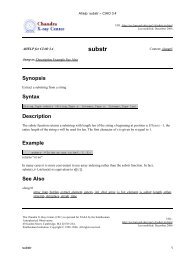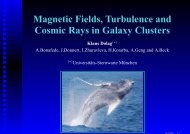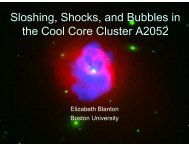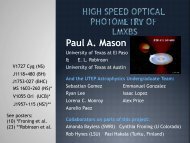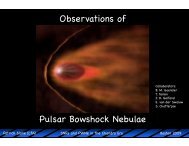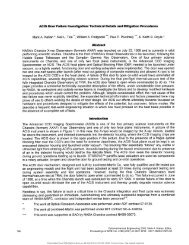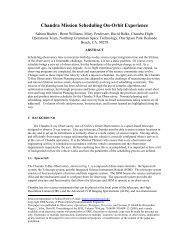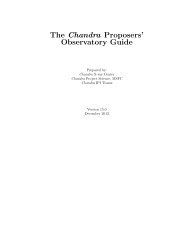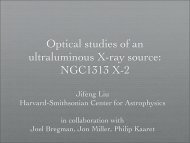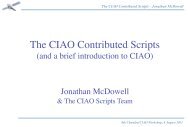PDF Version - Chandra X-Ray Observatory (CXC)
PDF Version - Chandra X-Ray Observatory (CXC)
PDF Version - Chandra X-Ray Observatory (CXC)
Create successful ePaper yourself
Turn your PDF publications into a flip-book with our unique Google optimized e-Paper software.
Spring, 2012<br />
Fig. 3 - HST/WFPC2 F606W image of NGC3393 (gray, background)14 showing the inner ~40” spiral arms, which are<br />
also prominent in the [OIII] line, compared with a similar scale ACIS image of the soft X-ray emission (0.3–2 keV),<br />
including a total of 90 ks exposure time. The ACIS image is sub-pixel binned (1/4 of the native ACIS pixel, ~0.125”)<br />
and adaptively smoothed (Wang, J. et al. 2012 in preparation). The nucleus is seen at the center of the X-ray image; the<br />
spectrum of the nuclear source shows featureless continuum emission and a prominent Fe-Kα 6.4 keV emission line.<br />
tation. Mindful of the double AGN of NGC6240 8 , both<br />
with prominent Fe-Kα lines, we decided to derive separate<br />
images in the hard continuum (3–6 keV) and in the<br />
Fe-K line regions of the spectrum. As can be seen in Fig.<br />
5, a single source, coincident with the optical emission<br />
line nucleus, dominates the continuum, while two sources<br />
appear in the Fe-K band: one coincident with the optical<br />
nucleus, the other closer to the radio position. The two<br />
sources are separated by 0.6” in the plane of the sky, corresponding<br />
to 150 pc at the distance of NGC3393.<br />
The ACIS spectra of the two sources are shown<br />
in Fig. 5; both spectra sport the prominent Fe-Kα lines<br />
of Compton-thick AGNs, and each source has X-ray luminosity<br />
of a few 10 42 erg s -1 . It appears that NGC3393<br />
contains not one, but two Compton thick obscured active<br />
MBHs.<br />
This result is reported in detail in a letter to Nature<br />
15 (<strong>Chandra</strong> press release http://chandra/photo/2011/<br />
n3393/) and, as discussed there, has clear implications for<br />
the galaxy/MBH merger evolution scenario.<br />
The idea of merger evolution was first modeled for<br />
the Antennae galaxies and other nearby ‘disturbed’ galaxies<br />
16 ; François Schweizer originally (and controversially)<br />
advocated merging of spiral galaxies as a general major<br />
formation path for elliptical galaxies 17 .<br />
In more recent times, increasingly sophisticated<br />
simulations have explored the evolution of galaxies (stars<br />
and gaseous components) and their MBH for a range of<br />
merging parameters, including major collisions and mergers<br />
of similar mass galaxies, minor mergers of different<br />
Fig. 4 - 3–8 keV image of the NGC 3393 nuclear region with ¼<br />
subpixel binning, smoothed with a Gaussian of FWHM=0.25”.<br />
Contours of HST F664N Hα and VLA 8.4 GHz emission are<br />
shown in gray and green, respectively (see Fabbiano et al<br />
2011 15 for details and references.)<br />
5



